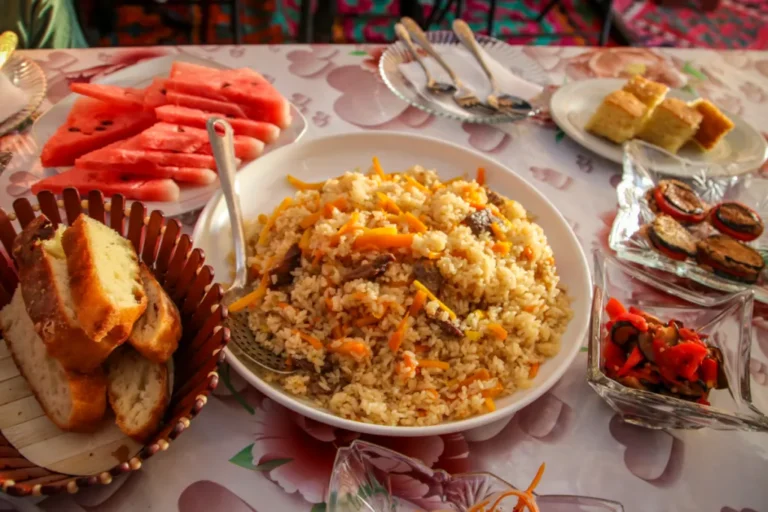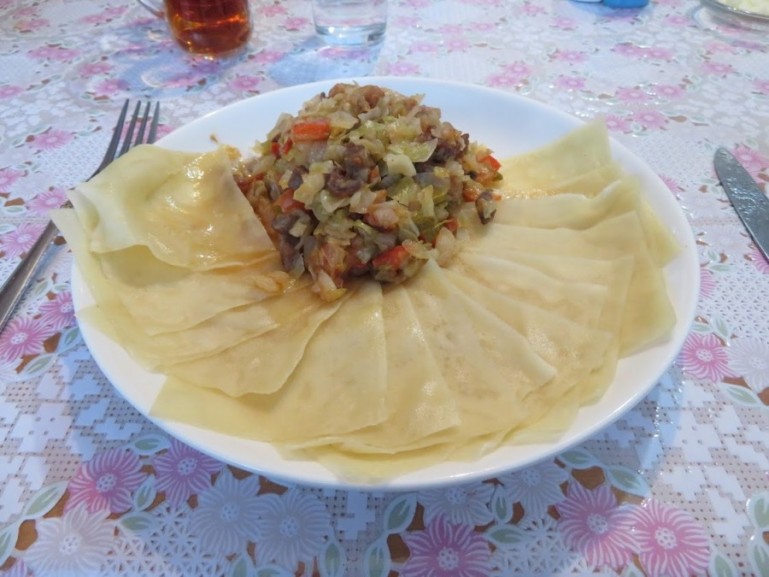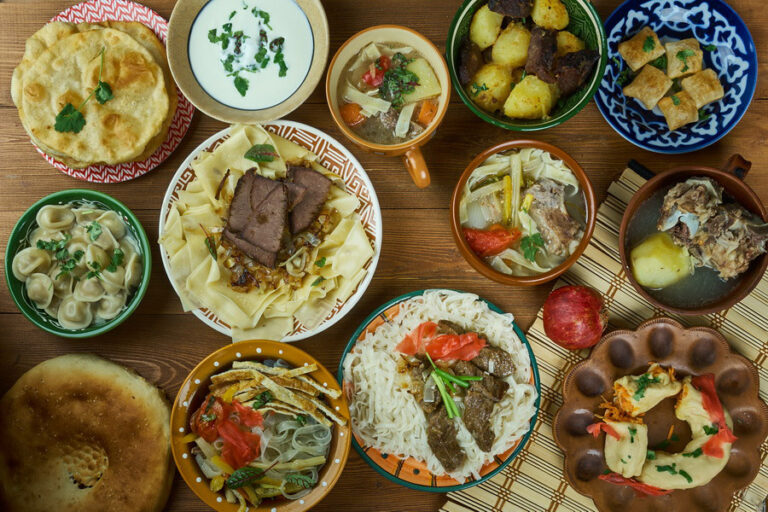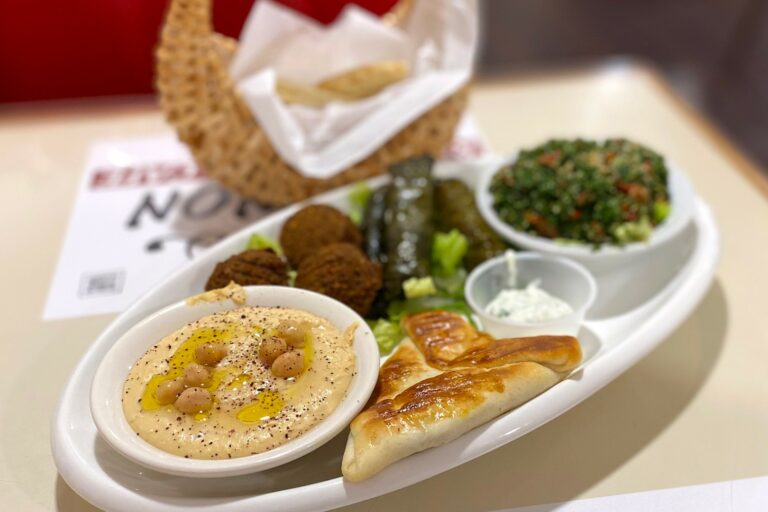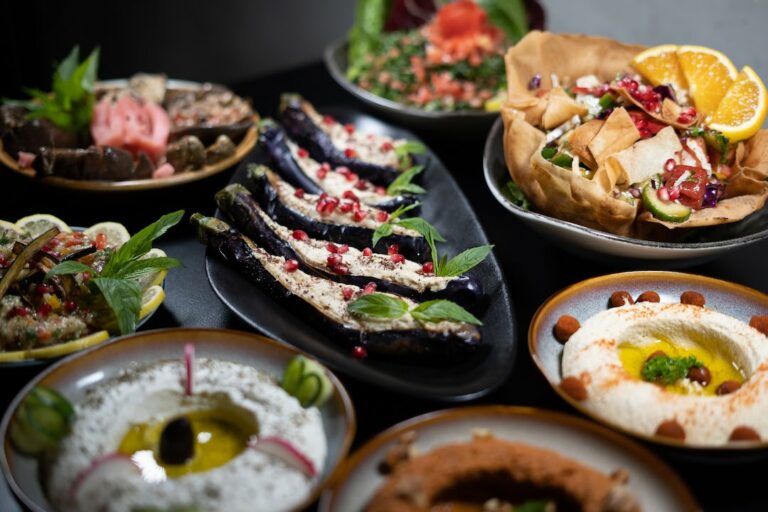Introduction: The Connection between Kyrgyz Folklore and Cuisine
Kyrgyz culture is deeply rooted in folklore, music, dance, and traditional practices. The cuisine of Kyrgyzstan is no exception, as it reflects the country’s nomadic lifestyle and cultural heritage. The Kyrgyz cuisine is a rich blend of flavors, spices, and techniques, with influences from Central Asian, Chinese, and Russian cuisines. The traditional dishes of Kyrgyzstan are an essential aspect of the country’s cultural identity and are an integral part of every celebration and gathering.
Traditional Kyrgyz Dishes and Their Origins
The Kyrgyz cuisine is based on meat, dairy products, and grains, and the traditional dishes are often prepared using simple techniques. One of the most popular traditional dishes is Beshbarmak, which means ‘five fingers’ in Kyrgyz. It is a meat dish made with boiled mutton or beef, served with handmade flat noodles and onion sauce. Another famous dish is Manty, which is a type of steamed dumpling filled with meat and onions. These dishes have their roots in the nomadic lifestyle of the Kyrgyz people, where meat was the primary source of protein and grains were a staple food.
The Role of Kyrgyz Nomadic Lifestyle in Cuisine
The Kyrgyz people have a long history of nomadic lifestyle, and this has significantly influenced their cuisine. The nomads would travel with their herds and had limited access to vegetables and fruits, so they relied on meat, dairy products, and grains. This is why meat dishes are the centerpiece of traditional Kyrgyz cuisine, and vegetables and fruits are used sparingly. The nomads also had to develop techniques to preserve food, such as drying meat and making fermented dairy products like kumis and ayran.
Symbolism in Kyrgyz Culinary Practices
Kyrgyz culinary practices are steeped in symbolism, with many dishes having a deeper meaning. For example, the Beshbarmak dish is traditionally served on a large platter, and the eldest person at the table is served first. The head of the family is usually given the best piece of meat, which is a sign of respect. Similarly, the Manty dumplings are traditionally served in odd numbers, representing the members of the family. These culinary practices reflect the importance of family values and hierarchy in Kyrgyz culture.
The Influence of Silk Road on Kyrgyz Cuisine
The Silk Road was a crucial trade route that connected China, India, and the Mediterranean, and Kyrgyzstan was situated at the crossroads of this route. This exposure to different cultures and cuisines has had a significant impact on the Kyrgyz cuisine. The spices, herbs, and cooking techniques used in Kyrgyz cuisine have been influenced by Chinese, Indian, and Persian cuisines. For example, the use of cumin and coriander in Kyrgyz dishes reflects the influence of Indian and Persian cuisines.
Conclusion: The Cultural Significance of Kyrgyz Cuisine
In conclusion, Kyrgyz cuisine is an essential aspect of the country’s cultural heritage, reflecting its nomadic lifestyle, traditions, and influences from other cultures. The traditional dishes are simple, hearty, and rich in flavors and have deep symbolism. The Kyrgyz people take pride in their culinary practices and use them as a way to connect with their past and preserve their cultural identity. For anyone visiting Kyrgyzstan, exploring the local cuisine is a must as it offers a unique insight into the rich cultural heritage of the country.

